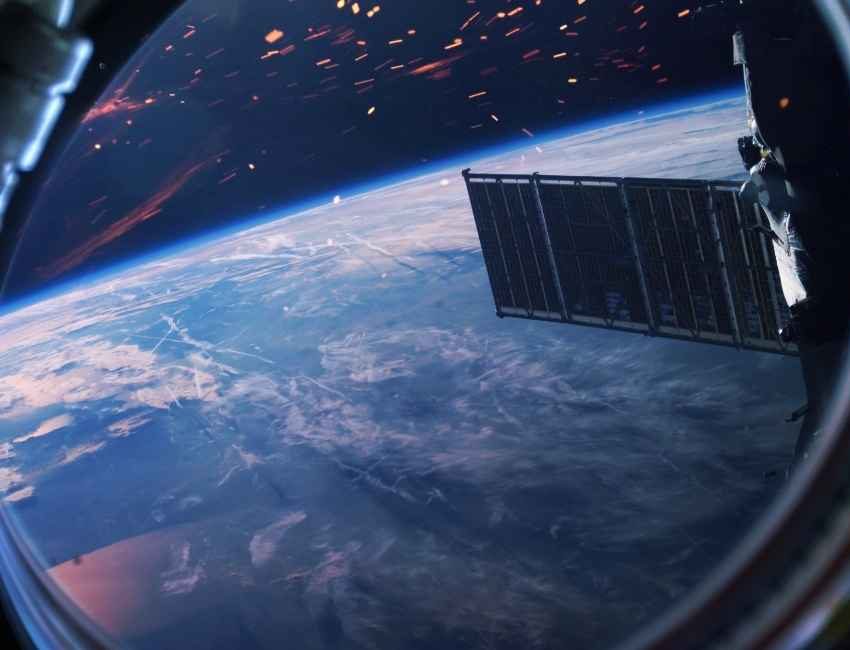The universe has always impressed man. While most of us will never travel to space, the very thought of such a journey awakens the imagination and is in itself a bit unbelievable. We can imagine if it would look like that, but we certainly can’t imagine moving in zero gravity as we move away from Earth and everything we know. How would it feel to fly in a shuttle at tremendous speed ?? Can you accelerate indefinitely in space?
You can’t accelerate indefinitely in space. To accelerate an object in space, force is required. For the object to accelerate infinitely, it needs infinite amounts of fuel, which is not possible today. Even if we have unlimited amounts of fuel, the object in space cannot go faster than the speed of light.
Today’s aircraft use impulsive thrusts for their flight that gives them chemical rockets. In the first part of the journey, the thrust serves to push the spacecraft in the desired direction, and then the rockets go off. The aircraft does not stop then, it will keep coasting at the same speed and in the same direction. When the space shuttle arrives at the desired location, that is, in orbit, it plans to travel, it has already used up most of its fuel supply. The rest of the fuel serves to change direction or to accelerate.
Can you accelerate in space?
Spacecraft functions on the principle of Newton’s Law of Motion meaning that for every action there is an equal and opposite reaction. For the spacecraft to accelerate, it needs a force that will cause an opposite reaction, that is, acceleration. If we apply force in the same direction as a spacecraft velocity, the object increases the speed. If we apply a force in the opposite direction from the direction of movement of the object, we will slow down its movement.
Another thing that is needed for an aircraft to accelerate is the thrust that occurs when a system expels or accelerates mass in one direction the accelerated mass will cause a proportional but opposite force on that system. As long as there is usable energy in spacecraft, you can use it to speed up by giving thrust to the ship in the opposite direction from the direction we want to go.
Although people assume that movement requires continued force, that is not true. Newton’s First Law of Motion tells us that a force is not needed to keep an object in motion. This rule also applies to the space craft. Once the space craft has launched it needs acceleration to get into space and then to steer into the desired orbit. Once the spacecraft enters the desired orbit, there is no longer a need to consume fuel. The spacecraft is carried in orbit by gravitational forces, so it is not necessary to consume valuable amounts of fuel. The engines start when it is necessary to redirect the aircraft in the desired direction so that it is thrust.
Acceleration is used when it is necessary to get out of orbit and land at the desired location. To leave the orbit, additional force is needed to change the direction of movement, and acceleration is used in such situations. To accelerate in space, we need to have fuel to release, thus creating a thrust. Given that we have limited amounts of fuel, the acceleration we can achieve is limited and fuel should be used very sparingly. Since the universe is mostly empty space in which there is dust, hydrogen and radiation, it does not exist, at least so far the idea has not been realized, which would allow energy for propulsion other than fuel.
Can acceleration be felt in space?
Of course. The feeling of acceleration is a consequence of the application of uneven application of force. The physical feeling of g forces acting on your body is due to acceleration. No matter how fast you go, you don’t feel constant pressure, but for example, if you accelerate sharply in a car you will feel the pressure of g force. After a short time, your body will get used to it and you will feel as if you have not even accelerated. If you accelerate again, you will feel the force on your body again, but it will get used to it again. The same thing happens when you travel by airplane.
It is not clear to many people how the Earth constantly rotates around its axis when we never feel movement. We never feel movement because the speed is constant. Also, sometimes it seems to us that we are driving 30 km / h, when in fact it is 120 km / h, but getting used to the speed, we experience the environment differently. Astronauts staying at the International Space Station do not feel the movement although they travel at a constant speed of 17,000 mph around the Earth, but the thing is that there is no acceleration so no change or g force is felt.
The greatest acceleration is felt when the spacecraft takes off, which astronauts truly feel. When they accelerate, astronauts feel a push against their seats. If the spacecraft slows abruptly, astronauts can feel the push forward. Once you take off in space, acceleration and spin are two things you feel. When a spaceship spins astronauts feel a strong pull toward the outside of the spin. The faster it spins, the harder it is to pull.
Can you accelerate indefinitely in space?
No, you can’t accelerate indefinitely in space.
First of all, we don’t have a spacecraft that could accelerate that much. Such an aircraft would have to have unlimited amounts of fuel in order to be able to accelerate constantly, and this is by no means the case with existing aircraft. In order to be able to separate from the ground, the aircraft must not be too large, and therefore cannot have unlimited amounts of fuel. The moment we run out of fuel, we can no longer accelerate.
One day, when spacecraft can fly without fuel, infinite acceleration may be possible, but today it certainly isn’t. We have not yet figured out how to make an aircraft that will produce fuel on its own or have a power source that will allow it to accelerate. However, this is being worked on and there are ideas on how to solve this problem, so we will surely one day have the opportunity to accelerate more.
Even if we could accelerate that much, we would never be able to reach the speed of light. We could accelerate fairly close to the speed of light, but we could never travel at that speed which means they could always travel even less close to the speed of light, but never at the same speed. If we traveled at such a speed, the world around us would change, while the years in the spacecraft would pass differently. A year of traveling at the speed of light inside a spacecraft would mean thousands of years that have passed on earth.
What limits speed in space?
Previously, scientists thought it was possible to travel at unlimited speeds, assuming we had the necessary conditions and vehicle to do so. However, Einstein proved that there is a speed limit beyond which we cannot, and that is the speed of light. No object can travel faster than 300,000 kilometers per second, which is the speed of light. For an object to travel at the speed of light, it is necessary to apply an infinite amount of energy to it, which of course is not possible. Also, during flight at the speed of light, the object gains mass, which is why it is necessary to apply even greater force. Unlike material objects, beams of light consist of photons that are weightless particles and do not require energy to move. Simply put, if you have no mass you are moving at the speed of light, and if you have mass it will never reach the speed of light.
In addition to the laws of physics, speed is also limited by fuel. Acceleration is easy to achieve in space if we have fuel for it. By depleting the amount of fuel we accelerate, but ultimately we will not be able to accelerate further without fuel. If they had unlimited amounts of fuel, they could accelerate indefinitely. Of course, we would never reach the speed of light, but it would still leave us enough space to travel at incredible speeds.
Also, technology is certainly a factor that limits the speed of travel. Technology that would have infinite amounts of fuel would have to enable such an aircraft that could protect the people in it. People have a speed limit that they can handle. Although a person gets used to gradual acceleration, rapid acceleration or deceleration can be deadly for the human body. Besides, such a spacecraft would have to be very durable to withstand tremendous speed and forces acting on it without damage or complete destruction.
Source:

